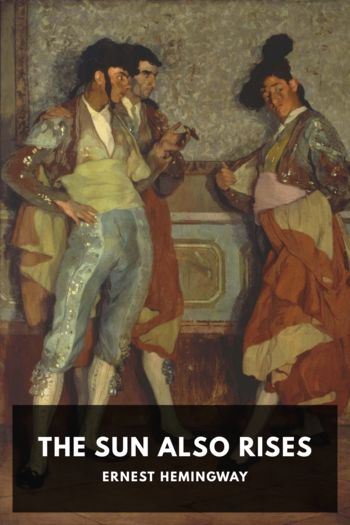The Milestone Protocol, Ernest Dempsey [100 best novels of all time txt] 📗

- Author: Ernest Dempsey
Book online «The Milestone Protocol, Ernest Dempsey [100 best novels of all time txt] 📗». Author Ernest Dempsey
“Exactly,” Sean agreed. “The Thoth Cult was one of the more prominent of its time, so much so that when many of the other religious followings fell away into the sands of time, they marched on, only growing in influence and power. Somehow, they managed to even snake their way into Greek mythology, which shows how much sway the cult’s members possessed. Hermes and Thoth were worshipped together, as if they were one being. You see some examples of similar cultural absorption with deities from Rome as well, but the way the Greeks honored Thoth, or Hermes, proves that the cult acolytes were able to navigate foreign cultures and infiltrate some of their most powerful minds.”
“Yes, but why are they here now?” Kevin asked. “What do they want with that tablet or the rose gem? Why did they kill everyone I worked with?”
The question hung heavy, like breezeless smoke in the air.
“The rose gem is the key to unlocking whatever it is they’re looking for,” Tommy said.
“Which is?” Tabitha asked.
Sean and Tommy looked at each other.
“You wanna?” Sean asked.
“No, I insist,” Tommy responded.
“You sure? I don’t mind if you want to take this one.”
“Be my guest. You did break into my penthouse.”
“Fine,” Sean relented. “We don’t know exactly what they want or what it is they’re looking for. But we have some ideas.”
“Ideas?” Tabitha asked with a belittling voice. “That’s it? You guys are talking about ancient cults and thousands of years of power plays, and all you’re basing it on is a hunch?”
“See?” Sean said, looking back at his friend.
“Fine,” Tommy sighed. “When I mention the pyramids, what’s the first thing that comes to your mind?”
She rolled her shoulders and glanced to the side as if the wall would give her the answer. “Egypt. Why?”
“Why not South America or Central America? What about Mexico? Or why not the ones in the Southeastern United States? Or perhaps the ones in Cambodia?”
“You asked which ones were the first ones that came to mind. I answered. What’s your point?”
“The point,” Sean took over, “is that there are pyramids all over the world, and we’ve never really been given a good answer as to why. The ones in Egypt align almost perfectly with Orion’s belt. Others around the world align with various celestial bodies as well.”
“Yes,” Kevin cut in, “but that was because of religious beliefs. It was a way to ensure transportation to the afterlife the culture associated with.”
“Sure. But it seems odd that it was the pyramid design that traveled all over the world to places and people who were completely disconnected, separated by vast oceans. And then there’s the little issue of the ones we discovered.”
Tabitha lowered her eyebrows at the statement. “What do you mean, the ones you discovered?”
“That information has been kept fairly quiet in recent years,” Tommy answered. “You probably won’t find any articles with a Google search if that’s what you were thinking. We found a pyramid under the sands of the Sahara and buried in a mountain near Denali in Alaska. Makes you wonder what they were doing in those remote locations where we have no record of civilizations beyond fairly recent history.”
“I didn’t know about those,” Kevin confessed. “Did you really? I mean, you two found new pyramids, and the historical community doesn’t know about it?”
“Some may know,” Sean said. “I’d say it’s likely. But it’s like the first rule of Fight Club.”
“Never talk about Fight Club,” Tommy said in a warning tone. Then his lips creased into a smirk. “The pyramids we located were harnessing a vast amount of power. And we weren’t the first to discover the one in Alaska. Someone was already there, using the vast amount of energy the megalithic structure was producing.”
Tabitha raised both eyebrows this time, but said nothing.
“Energy?” Kevin asked, genuinely curious. “What do you mean it was producing energy?”
“Good question,” Tommy said. “You may or may not know this, but there are locations around the planet that appear to be hotspots for geostatic electricity. I first heard about this in a book I read by a professor who was looking into the story of the Ark of the Covenant and how it really worked.”
“What do you mean how it worked?” Tabitha asked.
Tommy turned to her. “It was a super weapon. The Egyptians were the first to use arks in ceremonies. A quick online search will show you a few examples, such as one that was found in the famous tomb of King Tut. The Egyptians, however, didn’t understand the true capability of the arks as weapons. They merely used them for show, as far as we can tell, to control the masses with public displays of electric power that wowed the people and made them believe that their deities were behind it all.”
“Moses grew up in the courts of the Pharaoh,” Sean explained, taking the reins. “He attended the Egyptian schools, and probably went to many of these ceremonies. So, when God told him to construct an ark, Moses knew exactly what to do and how to do it. It’s unclear if even he knew what was coming. Either way, if you look at the locations of the pyramids and many important temples from ancient Egypt all along the Nile, you’ll find that nearly all of them correspond with geostatic hotspots, essentially pools of static electric energy that occur naturally on the surface of the earth.”
Tommy resumed. “The two pyramids we discovered were likewise built atop such energy sources.”
Magnus considered what the two friends said before speaking. “You said that the ancients used those pyramids and the arks for show, to keep the people in line.”
“Correct.”
“But you also said that the two pyramids you discovered were in remote locations where there were no ancient civilizations.”
“Also correct,” Tommy said. “And I see where you’re going with that line of thought, Magnus. We stumbled on the same problem.”
“Until,” Sean interjected, “we discovered a commonality.” He paused and panned





Comments (0)